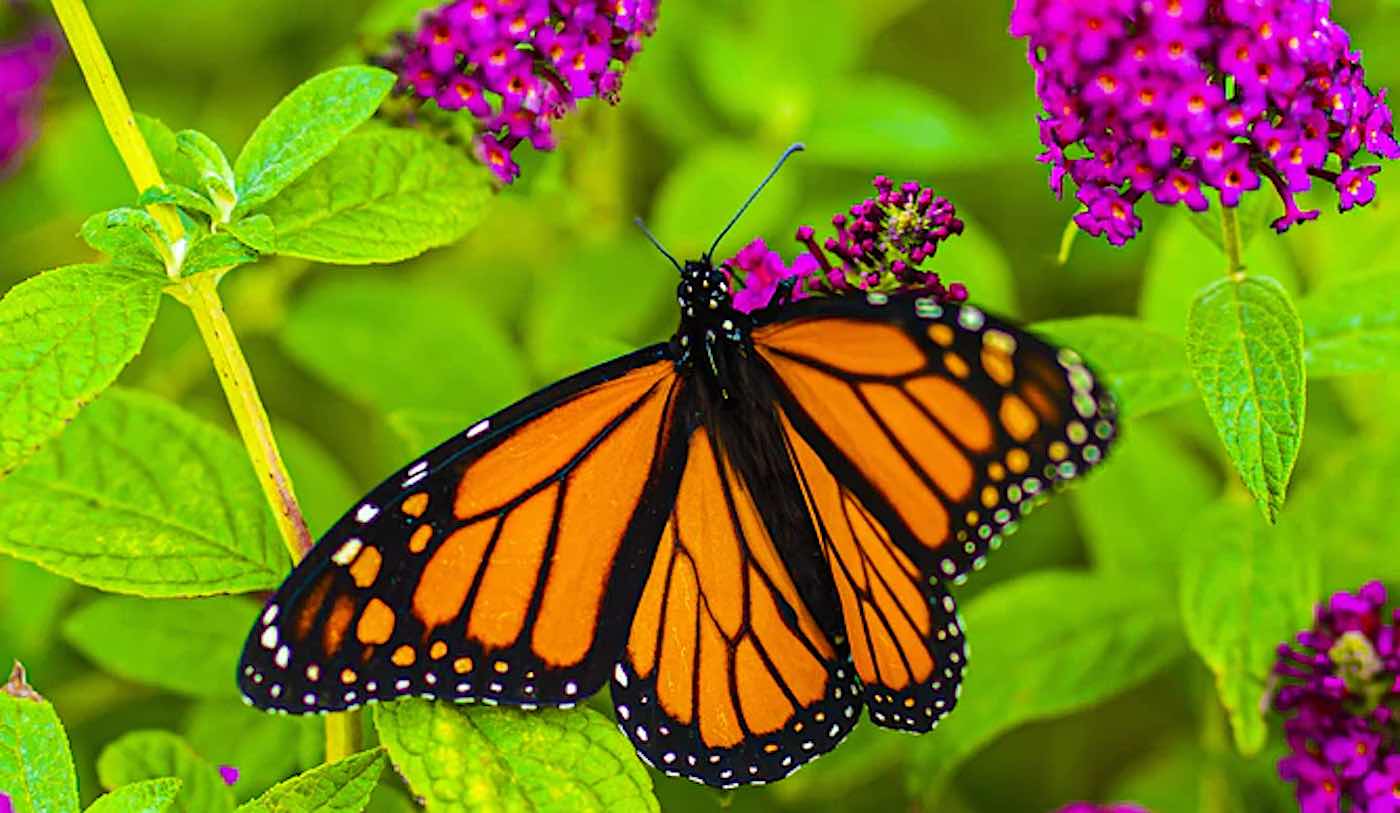Following a massive, 125-fold increase in western monarch butterfly populations in America, a 35% increase has just been recorded in the numbers of monarchs arriving in Mexico.
As one of the great migratory species on the planet, entomologists in Mexico don’t bother counting individuals, but rather the acreage of mountaintop pine trees on which they roost.
In the pine-tree covered mountains west of Mexico City, this year seven acres were covered with butterflies compared to around 5.8 last year.
Arrivals in California on their way down to Mexico were also in much greater numbers.
Experts in Mexico, according to AP, are reporting that this is due to a mixture of an overall reduction in wintering forest loss and adaptation to what they describe as climate change, although they add plenty of non-climate related aspects under the umbrella such as pesticide use and logging.
Normally, the monarchs arrive in late October to early November, escaping the cold in North America. They typically then leave around March, moving to either side of the Rocky Mountains as far north as Canada. Last year was different, in that most of them left in February on a fortuitous flight that saw them escape an April heat wave.
RELATED: Scientists Find the Secret to ‘Unhackable’ Security Systems on the Wings of Butterflies
This year some of them left in April, which experts said was very strange, and that they will be curious to see the numbers next year to assess whether this late start was a good strategy.
A flight of hope
When it comes to this majestic species, the mainstream media often offers doom and gloom. Yet it’s normal for migratory species to fluctuate greatly in number; migration, after all, is a highly-dangerous behavior.
The Guardian, closing the report on this year’s 35% increase in butterfly numbers, wrote “Drought, severe weather and loss of habitat – especially of the milkweed where the monarchs lay their eggs – as well as pesticide and herbicide use, and climate change, all pose threats to the species’ migration. Illegal logging and loss of tree cover due to disease, drought and storms also continues to plague the [forest] reserves.”
The English journal said much the same thing in 2021, when arriving monarchs were down 26%, and were equally pessimistic the year before when arrival numbers were up a staggering 144%.
CHECK OUT: Monarch Butterflies Employ a Sun Compass on Their Long-Distance Migration
Arrivals in 2020 saw the covered acreage the same as this year. Even in the early 2000s, when monarch populations were capable of arriving in Mexico in droves that would regularly cover up to 20 acres or more, there were even scanter years than the 2021 dip, demonstrating that many factors have always impacted this species, and that the situation is not so grim.
FLUTTER the Good News Over to Nature Lovers…




















